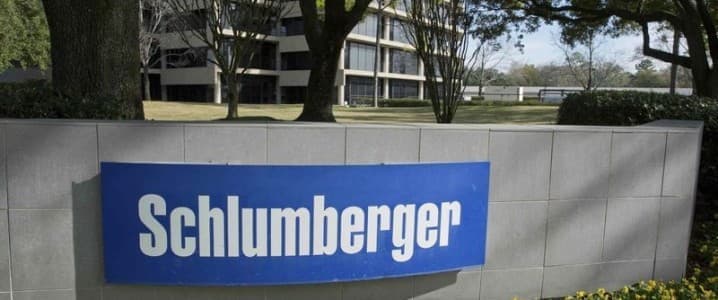By Alex Kimani – Apr 03, 2025, 5:00 PM CDT
- The awarding of the contract for an ultra-deepwater Trion project offshore Mexico is more than just another deal.
- The contract awarded by Trion’s operator will see SLB employ its artificial intelligence-enabled drilling capabilities to drill 18 ultra-deepwater wells with improved operational efficiency and well quality.
- AI is transforming deepwater offshore oil drilling by enhancing safety, optimizing operations, and improving predictive maintenance through real-time data analysis, equipment monitoring, and risk mitigation strategies.
These are big days for oilfield services (OFS) providers, and the awarding of a major drilling contract to U.S.-based giant SLB (NYSE:SLB) for an ultra-deepwater Trion project offshore Mexico is more than just another deal. It’s where the deepest offshore drilling becomes the purview of artificial intelligence.
The contract, awarded by Australia-based Woodside Energy Group (NYSE:WDE), Trion’s operator, will see SLB employ its artificial intelligence-enabled drilling capabilities to drill 18 ultra-deepwater wells with improved operational efficiency and well quality.
SLB’s full-range of AI-powered drilling services includes digital directional drilling services and hardware, surface logging, logging while drilling, cementing, completions and wireline services. Woodside, the operator of the $7.2B Trion project, owns a 60% stake alongside Mexico’s state-owned oil and gas company Pemex with a 40% share. The offshore field is located ~180 km off the Mexican coast and lies at a water depth of 2,500 m. The first production is slated for 2028.
“SLB has extensive expertise in ultra-deepwater drilling projects globally and advanced technologies, including AI and digitally enabled hardware, to bring these wells online safely, efficiently and reliably,” said Wallace Pescarini, SLB’s President of Offshore Atlantic.“With water depths of up to 2,500 meters, the Trion development presents challenging technical conditions for drilling and well construction.’’
SLB’s latest Trion development contract comes two years after Woodside awarded a related contract to the SLB OneSubsea joint venture in 2023. The older project encompassed subsea horizontal trees, topside equipment and controls.
AI In Oil Drilling
AI is transforming deepwater offshore oil drilling by enhancing safety, optimizing operations, and improving predictive maintenance through real-time data analysis, equipment monitoring, and risk mitigation strategies. AI tools are currently being deployed in tasks such as reservoir characterization, seismic pattern recognition, pressure-volume-temperature (PVT) properties prediction, permeability and porosity prediction, drill bit diagnosis, well pressure drop estimation and pipeline and oil well production optimization.
According to oilfield equipment supplier WWT International, use of AI in predictive maintenance is one of the most significant ways in which AI is transforming the drilling industry. Drilling equipment is typically subject to high levels of wear and tear, which can lead to costly breakdowns and delays. AI algorithms are able to analyze sensor data from drilling equipment in real-time, accurately predicting when maintenance processes are required thus helping to cut down on downtime and increase efficiency. This way, AI is helping companies save time and money while improving safety.
WWT says automated drilling is yet another emerging use of AI in oil drilling. Automated drilling systems utilize AI algorithms and machine learning to control the drilling process, from drilling direction to mud pressure and torque. These AI-powered systems are capable of automatically adjusting drilling parameters based on changing conditions, such as varying rock hardness thus optimizing the drilling process in real-time. AI-powered drilling systems can improve drilling efficiency and lower costs. Additionally, AI may revolutionize well planning by enabling more accurate and optimized drilling paths. AI algorithms can analyze geological data and drilling parameters and generate detailed 3D models of the subsurface, thus helping companies to plan more efficient drilling paths. These optimized drilling paths can minimize the risk of drilling problems, reduce drilling time and ultimately lead to significant cost savings.
Overall, the cost-cutting opportunities that AI promises to bring to the drilling business will be a very welcome bonus for oil and gas companies as they continue cutting costs. Back in February, Reuters reported that SLB is reorganizing certain functions and continuing to cut its workforce. SLB will create a new performance function, including a series of functions, ranging from security and operational integrity to global business services. The company will enact these changes as part of its ongoing cost-savings initiative, as it predicts tepid growth in the current year as its customers grow more cautious about spending amid fears of an oil oversupply. SLB, which employed ~111K people a year ago, has already implemented some restructuring efforts with the company taking $237M in severance charges in 2024.
Similarly, in the same month, Chevron Corp. (NYSE:CVX) announced that it will lay off 15-20% of its global workforce and reorganize its business structure. The U.S. oil and gas major announced that it will consolidate its Oil, Products & Gas segment into Upstream and Downstream, Midstream & Chemicals segments, and be led by Mark Nelson, the current executive vice president of the Oil, Products & Gas unit.
“Our new organizational structure and leadership appointments are designed to improve our operational efficiency and position Chevron for sustained growth,” CEO Mike Wirth said in a statement.
The mass layoffs are part of the company’s efforts to cut costs.
By Alex Kimani for Oilprice.com
More Top Reads From Oilprice.com
- Your Next iPhone Could Cost $2,300—But Oil Prices Might Stay Stuck
- Trump’s Global Strategy: Securing Resources Through Annexation?
- Iran Targets Dramatic Increase From Oil Fields Bordering Iraq
Back to homepage
Alex Kimani
Alex Kimani is a veteran finance writer, investor, engineer and researcher for Safehaven.com.
More Info
Related posts
Leave a comment

